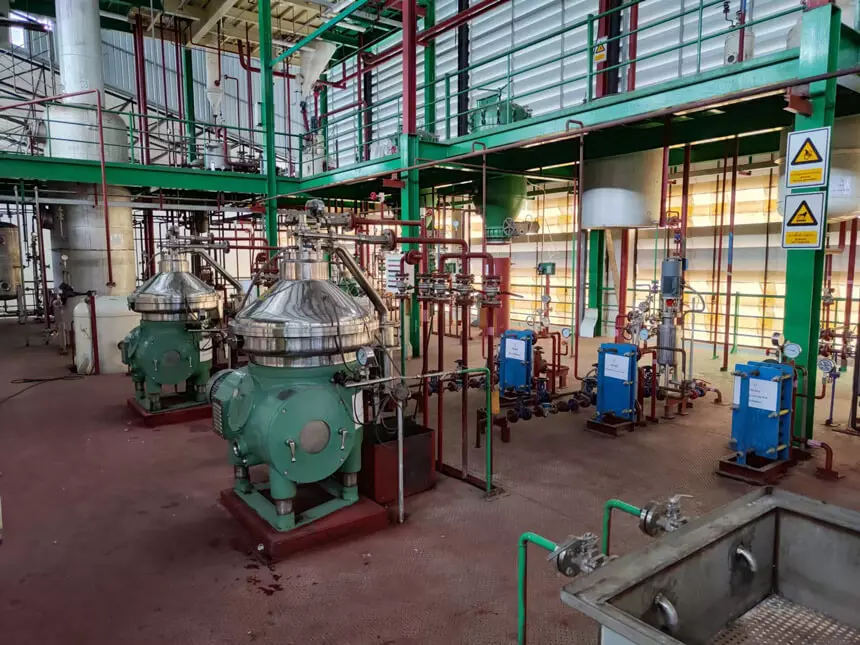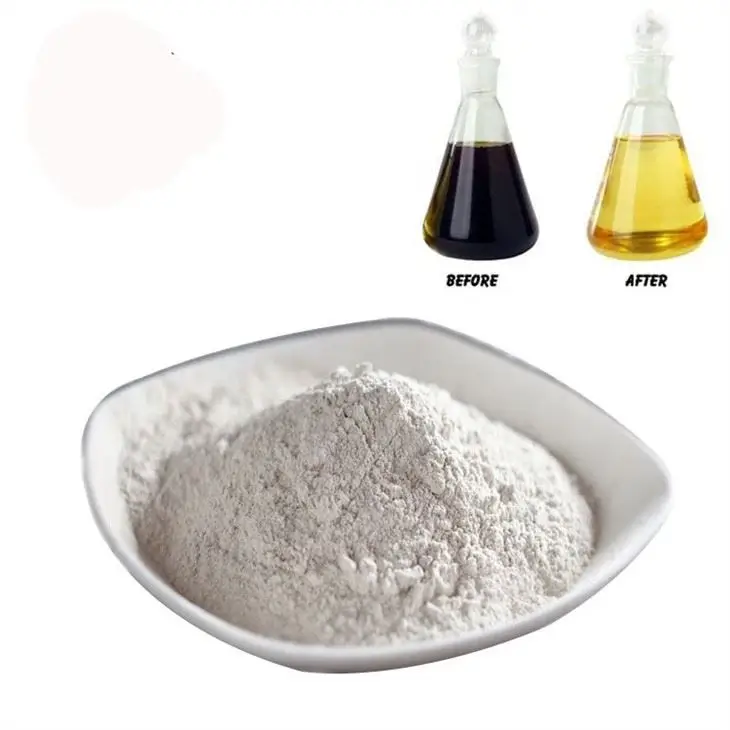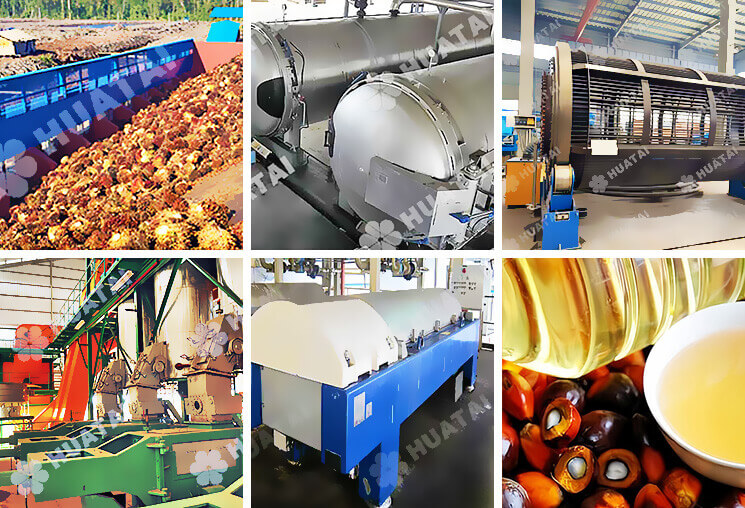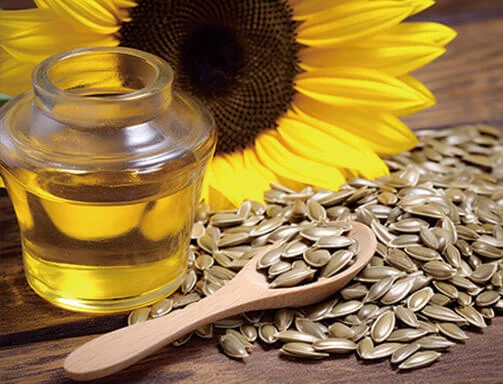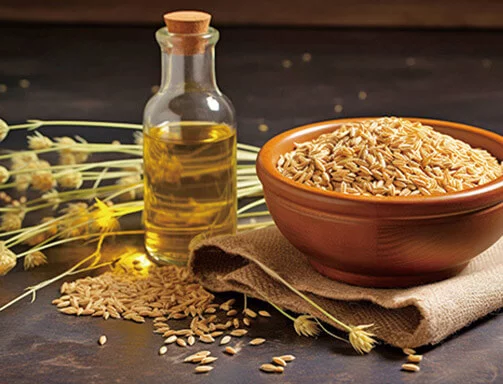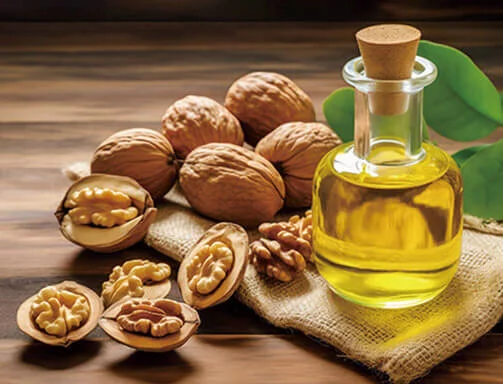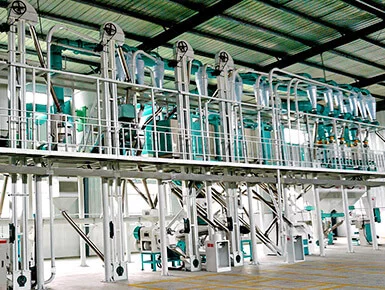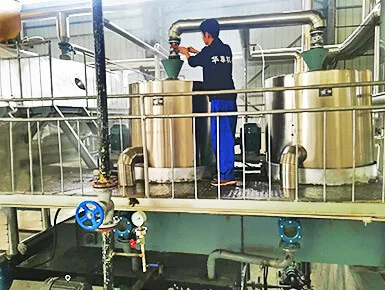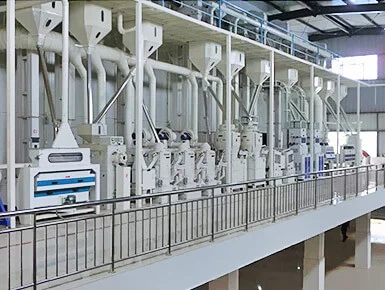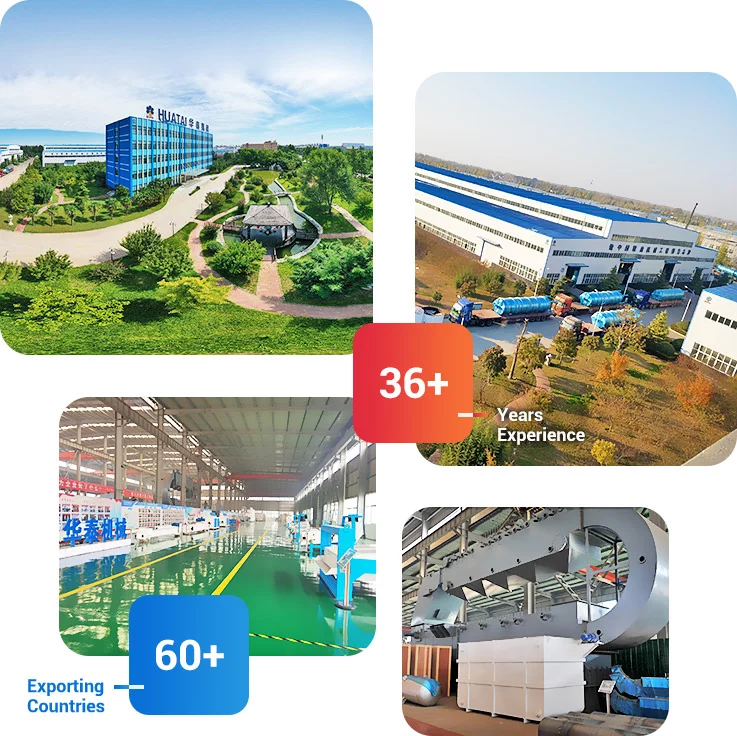![Palm Oil Bleaching Process | Step-by-Step Guide]()
Introduction
The palm oil bleaching process is a critical stage in the refining of crude palm oil (CPO), transforming it into a high-quality, light-colored product suitable for edible and industrial applications.
In this guide, we will explore the palm oil bleaching process step by step. By the end, you'll have a thorough understanding of how to bleach palm oil effectively.
The palm oil bleaching process can be broken down into five main steps, each with specific requirements and considerations.
Step #1: Pre-Treatment of Crude Palm Oil
Before bleaching, the oil must be degummed to remove phospholipids, which can cause cloudiness and instability. Degumming is typically done by adding hot water or phosphoric acid, followed by centrifugation or filtration. The oil’s temperature should be between 90-125°C, and moisture content optimized at 0.2-0.3% to activate the bleaching agent effectively.
Importance: Insufficient degumming can lead to poor bleaching results, as residual gums may interfere with the adsorption process. Research suggests starting moisture levels, such as 0.5% before dry-degumming, are favorable for subsequent bleaching. (You may also be interested in: Palm oil fractionation >>)
Practical Tip: Ensure thorough degumming by monitoring phosphorus levels (<50 ppm post-degumming) to set the stage for effective bleaching.
![Crude palm oil degumming before bleaching]()
Step #2: Addition of Bleaching Agent
The bleaching agent, most commonly acid-activated bleaching earth (also called bleaching clay, bentonite, or fuller’s earth, primary component: aluminium silicate), is added to the oil.
Activated carbon is another option, particularly for dark oils. Dosage typically ranges from 0.5-3% by weight, depending on the initial color, desired final color, and type of impurities.
Mechanisms: The bleaching agent works via adsorption (physical and chemical) and catalysis, removing color pigments, trace metals, and oxidation products. Natural bleaching earth, synthetic silicates, and activated carbon are alternatives, each with varying efficacy.
Factors Affecting Choice: The choice depends on cost, availability, and specific impurity profiles. For example, activated clay is cost-effective for carotenoids, while carbon is better for chlorophyll removal. Studies show different bleaching earth types affect final oil color and oxidative state.
![Bleaching earth for palm oil]()
Step #3: Mixing and Reaction
The oil-bleaching agent mixture is heated to 90-125°C and mixed for 15-45 minutes, typically 20-30 minutes, under vacuum (50-125 mmHg).
Vacuum reduces pressure, lowering boiling points of volatile impurities and preventing oxidation, which could lead to off-flavors and reduced shelf life.
Process Variables: Temperature affects viscosity, adsorption kinetics, and filtration rates; contact time improves color and chlorophyll removal but excessive time may darken deodorized oil.
Moisture content (≤0.05% to ~0.35%, optimal 0.2-0.3%) is crucial for chlorophyll and phosphorus removal.
Role of Vacuum: Vacuum enhances efficiency by facilitating impurity removal and preventing oxidation, critical for maintaining oil quality. For continuous processes, sparging steam ensures a homogenous mixture.
Step #4: Filtration
After reaction, the oil is filtered to remove the spent bleaching agent and any residual impurities. Common methods include plate and frame filters for batch processes and vertical pressure leaf filters for continuous operations.
Filtration ensures clear, particle-free oil, preventing contamination in subsequent stages.
Importance: Residual bleaching agent can cause issues like increased ash content or affect deodorization. Filters must be clean and well-maintained to prevent clogs, with regular disposal of spent agent for environmental compliance.
Equipment Variations: Plate type filter presses or vertical pressure leaf filters are used, with automatic control for stable production and ease of operation, especially in continuous systems.
![Palm oil plate and horizontal type filter machines]()
Step #5: Quality Control
Post-bleaching, test the oil for several parameters to ensure quality:
- Color: Measured using a colorimeter (e.g., Lovibond units) or visually compared to standards.
- Chlorophyll Content: Should be <0.05 ppm, measured via AOCS method Cc13e-92 (absorbance at 630, 670, 710 nm).
- Phosphorus Content: <2 ppm, indicating low phospholipids.
- Iron Content: <0.2 ppm, to prevent oxidation and rancidity.
- Peroxide Value: <0.5 mEq/kg, indicating low oxidation levels.
Testing Methods: Color can be assessed visually or with instruments; chlorophyll via spectrophotometry; phosphorus and iron via atomic absorption or ICP analysis; peroxide value by titration.
Regular testing ensures compliance with standards and process optimization.
Adjustments: If parameters are off, may need to adjustments like increasing bleaching agent dosage or extending contact time.
![Bleach palm oil]()
Common Mistakes and Troubleshooting
Several common mistakes can affect the bleaching process, with practical tips to avoid them:
| Mistake |
Impact |
How to Avoid |
| Insufficient Degumming |
Poor bleaching, residual gums interfere with adsorption |
Ensure thorough degumming, monitor phosphorus (<50 ppm) |
| Incorrect Bleaching Agent Dosage |
Ineffective removal or waste, quality issues |
Test and determine optimal dosage based on color needs |
| Wrong Temperature or Contact Time |
Inefficient process, darkened oil, or incomplete removal |
Monitor and control temperature (90-125°C), time (20-30 min) |
| Inadequate Vacuum |
Oxidation, reduced efficiency |
Maintain vacuum (50-125 mmHg), ensure system functionality |
| Poor Filtration |
Residual agent, contamination in final product |
Clean and maintain filters, ensure proper disposal |
These mistakes can lead to lower quality palm oil, increased costs, or environmental issues, emphasizing the need for careful monitoring and process control.
Conclusion
The palm oil bleaching process is vital for producing high-quality, refined palm oil. Involve preparation, bleaching agent addition, mixing under vacuum, filtration, and quality control.
Henan Huatai Group provides quality palm oil bleaching machinery and equipment. We already have a large number of successful turnkey oil refining projects all over the world. Feel free to ask us for palm oil processing plant cost or detailed information about starting a small or large palm oil production line!
Frequently Asked Questions
What is bleached palm oil?
Bleached palm oil is refined palm oil where color pigments, like carotenoids, are removed, making it lighter and more suitable for cooking and industrial uses. It’s often odorless and stable, enhancing shelf life.
How to bleach palm oil?
To bleach palm oil, first degum it to remove impurities, then add activated clay (0.5-3% by weight) and mix at 90-125°C under vacuum for 20-30 minutes. Filter to remove the agent and test for quality.
What chemical is used to bleach palm oil?
Common chemicals include activated clay (bleaching earth) and activated carbon, with clay being the primary component (aluminium silicate) for adsorbing pigments effectively.
How long to bleach palm oil?
The bleaching process typically takes 20-30 minutes, depending on the oil’s initial color and desired outcome, with mixing under vacuum ensuring effective color removal.
How do you know when your palm oil is bleached?
You know it’s bleached when the color lightens, visible through a transparent lid or after 20-30 minutes, confirmed by testing for low chlorophyll (<0.05 ppm) and meeting quality standards.
Is bleached palm oil healthy?
Research suggests bleached palm oil is generally healthy, rich in vitamins, but some debate its nutritional value due to carotenoid loss. It’s safe for consumption, though more studies are needed on long-term effects.
How to bleach palm oil for soap making?
For soap making, degum palm oil, add activated clay, mix at 90-125°C for 20-30 minutes under vacuum, filter, and check color for aesthetics, ensuring it’s light for a clear soap appearance.
References:
![]() Service Coverage
Service Coverage
![]() FAQ
FAQ


